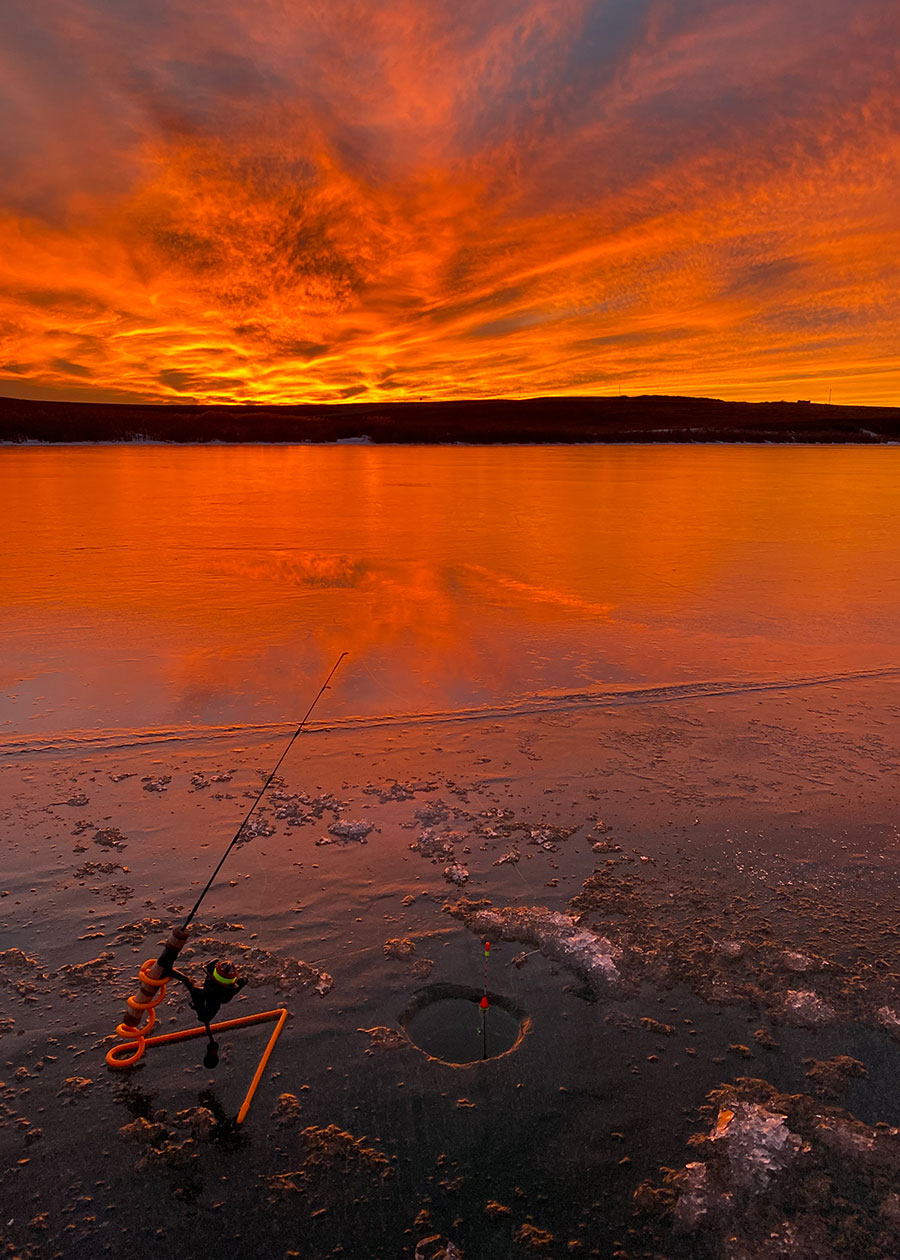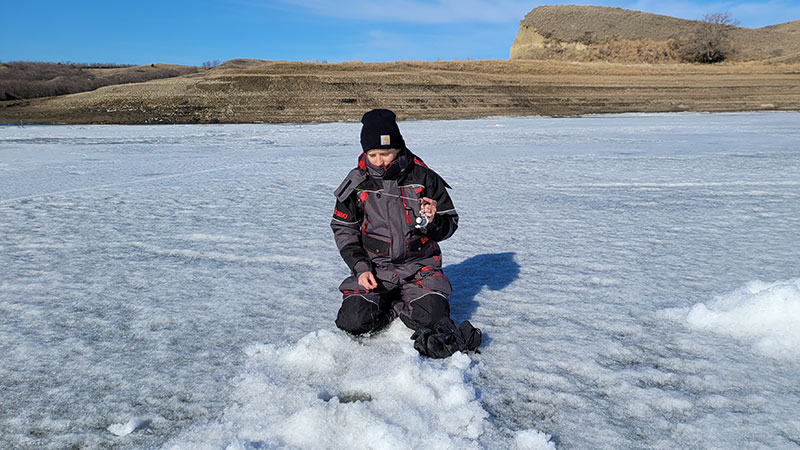Going Into Winter in Good Shape
Ron Wilson

Going into last winter, with many North Dakota waters lower than they’d been in some time thanks to severe drought, Game and Fish Department fisheries managers worried that declining water levels and other factors would lead to significant winterkill.
Turns out, it wasn’t nearly as bad as anticipated.
“Winterkill is a game changer. In a bad winter we can lose 20 waters on the low side to as many as 50 waters on the high side,” said Greg Power, Department fisheries chief. “Thankfully, we didn’t have much winterkill, so all those lakes, about 450 of them, are still out there producing fish. Our fish populations are in good to excellent shape pretty much throughout the state. That means lots of opportunities for anglers. We’re going into winter in good shape.”
The good news about last year’s drought is that it ended in pretty dramatic fashion in April with an unprecedented amount of snow in parts of the state, followed by rain.
“Knock on wood, but because of the high water this spring and the flooded vegetation at the right time, it appears to have produced a very strong yellow perch year-class throughout most of our waters,” Power said of a species that draws anglers from near and far during the ice fishing season. “That will pay dividends to the angler three, four years from now, and maybe we’ll have a real resurgence in some quality perch lakes throughout the state.”
In the interim, Power anticipates much of the focus just like a number of years prior, will be on walleye in North Dakota’s bigger, touted fisheries, as well as in the many prairie walleye lakes that dot the landscape.
“North Dakotans like walleye and they get plenty of them during the summer but there are probably even more walleye fishing opportunities in winter because a lot of these new lakes don’t have the greatest summer access,” he said. “They may not have a boat ramp, but they’re accessible via ice fishing. And we have probably another dozen or so new lakes that will provide keeper-sized walleye this winter.”

For a number of years, Department fisheries personnel encouraged ice anglers to take advantage of the pike fishing during the winter months. While pike populations aren’t what they once were in some waters, Power said pike fishing through the ice last winter was probably better than expected.
“It was really encouraging as we saw a fair amount of interest from anglers,” he said. “And the pike were biting, which was a good thing.”
Power said pike are like perch as they rely on flooded vegetation to help boost natural reproduction. Understanding that and knowing those powerful spring storms resulted in the inundation of vegetation left high and dry during the drought, a strong 2022 pike year-class from last spring is likely.
“I think pike and perch are going to be a little more predominant on the landscape here in a couple of years or so. And I think walleye should just keep at these levels or we might be able to even increase that a little more in the next few years,” he said. “The wonderful thing about walleye, especially in the southern half of the state, is that their growth rates are off the charts compared to what our statewide averages were historically. In some cases, all it takes is two years and you’ll have a winter fishery for 14- to 15-inch walleye.”
The following numbers are telling. What they say is this when using 2022 as an example: There are 451 active (fishable) lakes in North Dakota (record number), and pike (not necessarily catchable size, but they’re in the lake) can be found in 255 of those waters, while yellow perch can be found in 331 and walleye in 234.
| Year | Active Lakes | Pike | Perch | Walleye |
|---|---|---|---|---|
| 1992 | 177 | 104 | 96 | 79 |
| 2002 | 225 | 140 | 137 | 78 |
| 2012 | 365 | 207 | 278 | 145 |
| 2022 | 451 | 255 | 331 | 234 |
100-plus Years of Ice Fishing Regulations
Historical
- 1915 to 1950 – No fish houses were allowed.
- 1951 – Fish houses allowed but had to be licensed (first year 53 licenses issued statewide).
- 1900 to late 1940s – Many of the few lakes in the state were closed to ice fishing. (In 1948, lakes Metigoshe and Tewaukon, Spiritwood and Odland Dam were opened to ice fishing, but only for select species, anglers could use only one line, all holes had to be marked and only daylight fishing was allowed.)
- 1956 – Two lines became legal.
- 1960 – The state had about 60 fishable waters but 18 were closed to ice fishing.
- 1978 – Became legal to release fish.
- 1989 – About 190 fishable waters in North Dakota but 20-plus were closed to ice fishing.
- 1993 – Year-round fishing (historically late season ice fishing was illegal).
- 1996 – Four lines allowed statewide.
- 1999 – Fish houses no longer had to be licensed.
- 2001 – Darkhouse spearfishing allowed.
- 2006 – Fish house size restrictions removed.
- 2012 – Pike daily limit increased to 5 fish.
Today
- 450-plus fishable waters.
- Virtually all waters in the state are open to ice fishing. More waters available in winter than the open water season as U.S. Fish and Wildlife Service refuge waters (Audubon and Alice) are also open.
- Same regulations as open water fishing, plus anglers are allowed to use up to four lines.

